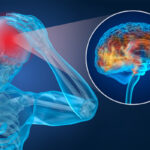Qigong meditation is an ancient Chinese healing practice that helps maintain physical, mental, and spiritual health.
Used for thousands of years, the combination of gentle movement, controlled breathing, and meditation can help support wellness. Although “active” qigong is often compared to Tai Chi, passive qigong is the best solution to help maintain and manage mental health.
As a form of meditation, passive qigong focuses on harnessing your “yin” energy by practicing body stillness and breathing used in traditional meditation methods.
Previously, we wrote about the impact of guided meditation on mental well-being, and today, we explore the five principles of qigong meditation to help promote a sense of well-being.
1. Breath Work
Slow abdominal breathing regulates and controls breathing at different paces.
Breath work can be focused on circular breathing or practicing breathing in and pausing after each exhalation. Deep breathing is an essential principle of meditation as it triggers your relaxation response so you focus on your state of being.
2. Awareness
Qigong meditation helps you develop both mental and physical awareness, training your brain to use the right hemisphere or “feeling side” of the brain to maintain body movement control.
As you develop this skill, you become aware of how your body exists in your environment through gentle movement.
For example, you must concentrate to maintain your balance, which helps reduce distractions so you can remain focused and relaxed. It also helps teach mindfulness and living in the moment, free of a racing mind. Through awareness, you become better equipped to manage thoughts and emotions while learning to become more self-forgiving and compassionate.
3. Intention
Intention or ‘Yi’ addresses conscious thought and remaining present in the moment.
This is achieved through focused concentration by practicing controlled, deliberate movement of the mind and body. Slowly learning intent, whether it is coming up with ideas, using your imagination, cognitive thinking, or physical movement, improves concentration and increases your sense of purpose. Objectives provide intent so that your mind forms purposeful thoughts, enhancing the mind-body connection. As a result, you train yourself to become relaxed.
4. Relaxation
Relaxation applies to your mind and body.
First, you learn how to release and loosen your body joint by joint, limb by limb, and muscle by muscle. As you release body tension, you become aware of your body, helping to reduce the feeling of resistance while relaxing the mind. You improve your presence of mind by focusing on releasing tension in a controlled manner.
5. Rooting
Rooting or grounding creates a sensation of gentle heaviness when your body is in a state of relaxation.
When standing, you feel your feet firmly connected to the ground and earth, supporting your body weight so it feels natural and effortless. When sitting, your hips feel grounded. Rooting envisions the idea of a tree firmly rooted in the ground so that sense of heaviness makes you feel secure, calm, and safely anchored.
Slow, choreographed movement, breathwork, and mindfulness in qigong meditation work together to keep you calm, focused, and self-aware. You learn to find a single point of focus to remain present in the moment based on your environment and use intent to help you maintain your body-mind connection to settle down your mind and central nervous system.
The Chicago Mind Solutions Difference
Chicago Mind Solutions works with individuals, offering neuropsychological testing and non-invasive treatment for many mental health conditions. For more information about our treatments and teletherapy options, please contact us at (224) 723-5050 or email info@chicagomindsolutions.com.






